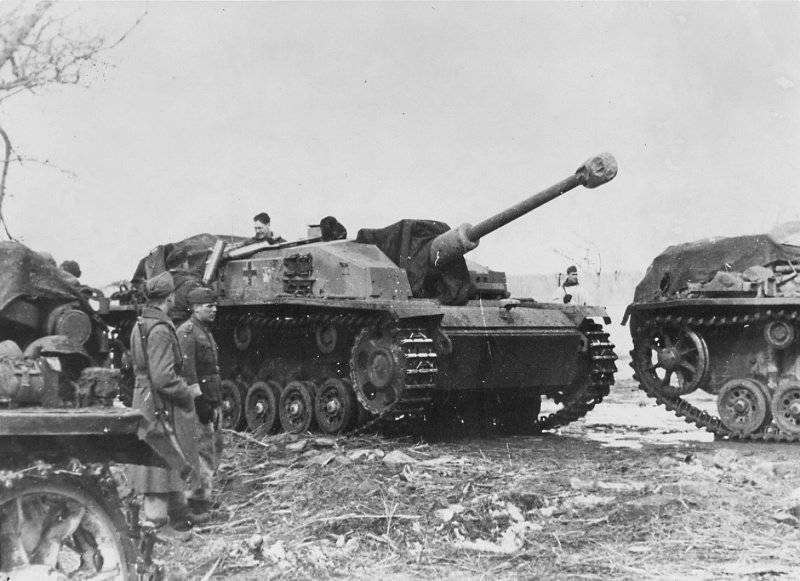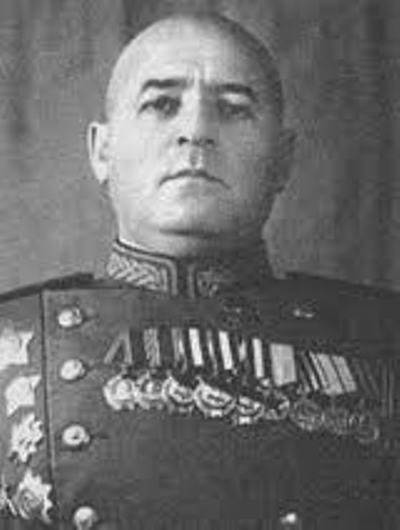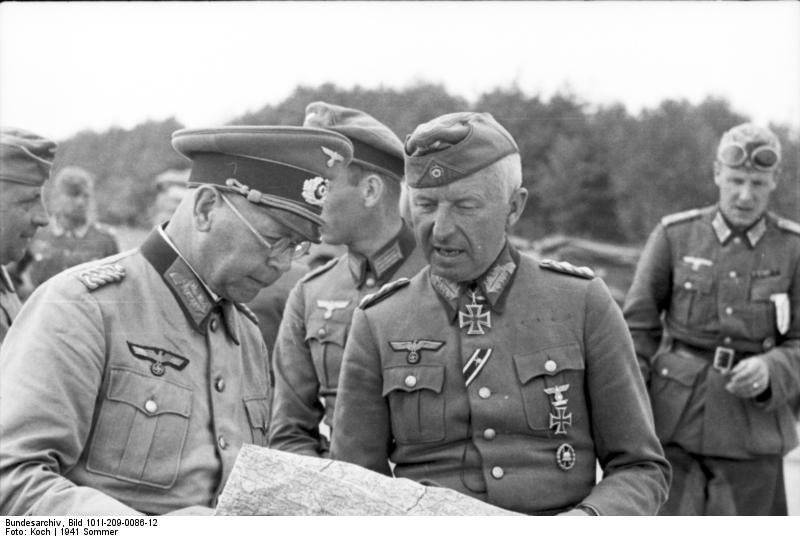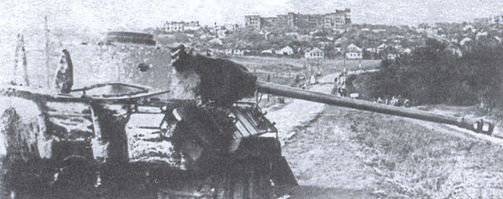Battle for Donbass. Breakthrough Mius-front. Part of 4
On August 25–26, the Southern Front was preparing for a new offensive. The army regrouped forces. At the same time, local operations were carried out in order to improve the situation in their sectors of the front. At 20.00 p.m. on August 26, the formations of the 4th Guards Cossack Cavalry Corps, together with the 4th Guards Light Artillery Brigade attached to it, the 2nd Guards Artillery Breakthrough Division went on the offensive. In the first echelon, the 30th and 9th guards cavalry divisions went on the offensive; in the second echelon there was the 10th guards cavalry division. The 30th Cavalry Division reinforced by the Guards Mortar Division and tank made the battalion to the area of the village of Ekaterinovo-Khaprova. Here, Soviet troops met strong enemy resistance, accompanied by counterattacks by infantry and tanks. However, the arrival of the advanced units of the 4th Guards Mechanized Corps turned the tide, the village was occupied by the Red Army.
By the end of August 27, units of the 4th Guards Cavalry Corps and the 4th Guards Mechanized Corps, overcoming the resistance of the weakened military formations of the enemy, reached the Kuteynikovo, Pokrovo-Kireevka, Ekaterinovka and Novo-Ivanovka districts. Soviet troops were in the rear of the Taganrog group of the Wehrmacht. Mobile connections completed the task. The success of the mobile units of the Southern Front was greatly facilitated aviation. On August 27, the Soviet Air Force focused its efforts on supporting the corps and mechanized corps. German troops concentrated in the Anastasievka-Marfinskaya area to counterattack against advancing Soviet units suffered heavy air strikes. The Luftwaffe did not show much activity that day. But then the German Air Force intensified its activities and ear strikes on the corps caused serious losses.
The 2 units of the Guards Army, using the success of the cavalry corps and the mechanized corps, launched an offensive and advanced on the right flank to 9 kilometers. Army Zakharova reached the line Novo-Elanchik, Vasilyevka, Dry Krynka, continuing to press the enemy in the southeast direction.
The German command was initially confident of the defense of the Mius-front, even when the troops of the Southern Front reached the Donetsk-Amvrosiyivka area, but on August 27 the situation changed radically. The 29 Army Corps was threatened with encirclement and total annihilation. It was obvious that the 6-I army alone was not able to eliminate the threat. On August 27, Field Marshal Manstein, commander of Army Group South, together with his army commanders, including 6 Army commander Hollidt, arrived at Adolph Hitler's headquarters in Vinnitsa. The Führer was told about the difficult situation of the Donbass Wehrmacht grouping, the inability to hold the front with the forces exhausted in the previous battles and offered to strengthen its 12 divisions or give the Donbass to the Red Army in order to free up forces on the South army group. Hitler promised to give command of Army Group "South" all the connections that could be removed from the fronts of the "North" and "Center" groups and to think about the possibility of replacing divisions weakened in battles with parts of the calmer sections of the Eastern Front.

German SAU "Sturmgeshuts" (StuG.III) one of the brigades of assault guns replenish ammunition during the fighting on the river Mius (Mius-Front).
The commander of the 6 Army, Hollidt, returning to his headquarters, decided to begin to take measures aimed at counteracting the Soviet troops' coverage of parts of the 29 Army Corps. He ordered the redeployment of forces from south to northwest in the area of Anastasievka - Latonovo. At the same time, the German command issued an order for the withdrawal of corps and division rear units in the western direction in the direction of Telmanovo (45 km west of Latonov) and Mariupol. Against the units of the 4 Guards Mechanized Corps, which made its way to the Kuteynikovo region, the command of the 6 Army began the transfer of assault guns. From the 4 Army Corps, which defended a section of the front in front of the 51 Army of the Southern Front, were allocated forces to strengthen the defense of Ilovaisk. The settlement was an important railway junction.
The Soviet command found out about the beginning of the regrouping of enemy forces almost immediately. On the afternoon of August 27 of the front-line commander Fyodor Tolbukhin, informed the commander of 4-th Guards Corps Corp. N. Ya. Kirichenko that the Wehrmacht’s 13 Panzer Division was concentrated in the Anastasiyevka, Marfinskaya area, and the enemy’s rear retreated to Telmanovo. Kavkorpus received an order, applying rounds and envelopes, without getting involved in protracted battles, not to release enemy troops to the west, smash it piece by piece, defeat the 13 Panzer Division before it could concentrate in the specified area for a breakthrough to the west. In the evening, the corps headquarters were additionally informed about the approach to the Grigorievka cavalry, and to Fedorovka - guns on a mechanized draft. The German command wanted to divert part of the Soviet forces with these strikes and thereby help the units of the 29 Army Corps to reach the west.
On the night of August 28, a representative of the Headquarters Vasilevsky arrived at the Southern Front. In the afternoon of August 28, armies and mobile units of the Southern Front received additional missions. 2-I Guards Army was supposed to push into the area Pokrovo-Kirieevka, Ekaterinovo-Haprovo 2-th Guards Mechanized Corps. The forward detachment of the army received the task of taking bridgeheads on the western bank of the Sukhaya Elanchik River. During the night of August 29, the main forces of the army were to enter the new line. The 4 Guards Mechanized Corps received the task of occupying the Mal area. Yekaterinovka, Krasny Kurgan, Grigorievka, providing from the western flank of the 4-th Guards Corps action, to prevent the enemy forces from breaking through from the Anastasievka area. Mekhkorpus also had to allocate a detachment to capture Fedorovka. 4-th Guards Corps by the morning of August 29 was to take the area Latonovo, Novo-Petrovsky, Novo-Khreshchatyk, and then intercept the crossing through the Miuss estuary from Lomakino. In this way. The 4 Guards cavalcourse actually had to deal with the enemy’s Taganrog grouping.
On August 29, units of the 2 Guards Army completed the task, and the 4 Mechanic Corps reached the line Shcherbakov, Fedorovka. Parts of the 5 shock army advanced northward and by the end of August 29 reached the Saur-Mogilsky-Svistuna line. The main stronghold of the German defense in this direction was the height of 277.7 - Saur-Tomb (one of the spurs of the Donetsk ridge, on top of which was the mound of the end of the Bronze Age). On the night of August 30, the height was attacked twice, but, having suffered serious losses, the Soviet troops retreated. Only after serious artillery preparation did the Soviet troops manage to take Saur-Mogila.
In the morning of August 28, the 4 th cavalcourse took possession of Malo-Kirsanovka, the German troops who were forced out from there retreated in the direction of Anastasiyevka. During the day, parts of the 4 Guards Cavalry Corps fought with scattered enemy groups that broke through to the west. August 29 cavalry advanced forces intercepted the road Nosovo-Lomakino and the main forces reached the line Novo-Khreshchatyk, Kr. The colony. A detachment of cavalcourse went to the coast of the Miussky estuary in the Lomakin area and after a short battle, took the crossing over the Miussky estuary. The second detachment from the 9 Guards Cavalry Division, sent to Taganrog, approached Mariivka. Here the cavalrymen met with serious resistance from the enemy and could not get on right away. The 28 and units of the 44 armies entered the line of Samoilov, Pechersky, Stepanovsky. The enemy troops were trapped in the square 25х25 km. The German command began to withdraw forces from the Sambek bridgehead.
29-th Army Corps was on the verge of complete encirclement and death. The only way to avoid the impending catastrophe for the surrounded German units was an immediate breakthrough to the west, until the Red Army created a solid front of the environment. The command of the 6 of the German army 28-29 of August concentrated in the Staro-Beshev area a new assault grouping composed of the remnants of the 3 th rifle division, the 9 th tank divisions and the 258 th infantry divisions (they were transferred from under the Eagle). It also included the battle group of the 17 Panzer Division, which was sent here from the 1 Panzer Army. To guide a counterstrike from the left flank of the 6 Army, the headquarters of the 4 Army Corps was removed. The grouping was supposed to strike in the south-east direction, in order to give parts of the 29 Army Corps to leave the encirclement. The 17 Army Corps was to conduct attacks in a southerly direction in order to divert Soviet troops.
The command of the Southern Front revealed the enemy’s plan, and the enemy’s strike was expected. 30 August the German group went on the offensive. The main blow was struck at the junction between the 33 and 87 of the guards rifle divisions. The first was part of the 13 Guards Rifle Corps, and the second in the 1 Guards Rifle Corps. The commander of the 13 Corps, P. G. Chanchibadze, deployed two anti-tank artillery regiments to the area of the offensive of the enemy forces. In the evening of August 30, the commander of the 2 Guards Army, G. F. Zakharov, gave the troops an order to go over to the defense. Artillery became the main tool in repelling the enemy's strike. The 13 Guards Rifle Corps was reinforced with six regiments of artillery and mortars. In addition, the corps was supposed to be supported by an army art group, which included a howitzer artillery brigade and a cannon artillery brigade. The 1 Guards Rifle Corps was reinforced with three artillery regiments, anti-tank and mortar brigades. In fact, on August 30, Zakharov’s army fought with the unblocking grouping the front to the northwest and the forces surrounded by the 29 Army Corps to the front south, southeast.

The commander of the 13 Guards Rifle Corps P. G. Chanchibadze.
Army headquarters "South" ordered the withdrawal of parts of the 29 corps to the west and leaving Taganrog. It was to the advantage of the German troops that the Soviet command could not quickly allocate forces to create a full-fledged ring of blockade and the 60-kilometer front of the encirclement covered only parts of the 4 Guards cavalry corps. In addition, the nature of the area - flat and open steppe, facilitated the withdrawal. The occupation of Taganrog came to an end. In the evening of August 29, the Germans began to destroy the infrastructure of the city. On the night of 29 on 30, the units of the battle group led by von Bülow left their positions on Sambek without any problems. German troops headed for a breakthrough along the northern bank of the Miussky estuary. The detachment under the command of the commandant of the city of Kalberlah left Taganrog along the southern shore of the estuary. On the morning of August 30, the connections of the 130 and 146 rifle divisions entered Taganrog. A detachment of the 2 Guards Mechanized Corps was also advanced to the city.
In addition, the Taganrog landing operation was carried out on the night of August 30. It was attended by the 384th Separate Marine Battalion. In the area, the village of Bezymennoye - Vesely farm, west of Taganrog, a company was planted under the command of the battalion commander Major F. E. Kotanov. An auxiliary landing was deployed east of Taganrog - the reconnaissance headquarters of the 58th army. The operation involved ships of the Azov military flotilla under the leadership of Rear Admiral S. G. Gorshkov. The paratroopers, with a sudden blow, destroyed the firing points of the enemy coastal fortifications and knocked out the German garrison in the village of Bezymennoye from the 111th Infantry Division. Marines destroyed up to 200 enemy soldiers and officers, as well as up to 200 transport units, 5 tanks and several ammunition depots. This time, a detachment of cover ships repelled the attack by enemy ships. During the battle, three German ships were damaged, and two Soviet armored boats were lost with the entire crew. In the morning, the landing was removed and returned to Yeysk. A few hours later the same detachment was transferred to Taganrog. The Marines, not meeting enemy resistance, occupied the port and captured the ships located in it. The auxiliary landing of the German forces was not found and was returned.
On the morning of August 31, the German troops again launched a counterattack, attempting to break through the passage to the encircled troops. The 33 th and 87 th guards rifle divisions again took the brunt of the attack. However, by the beginning of the German offensive, these divisions were significantly reinforced by artillery units. In addition, they were freed from combat against parts of the 29 Army Corps of the 2 Guards Mechanized Corps. Finally put an end to the German attempts to break through the corridor to the surrounded troops 5-I shock army. The breakthrough of the 5 troops of the shock army on Ilovaysk, in the gap between the 4 and 17-m army corps, forced the German command to throw the 17-th tank division into this sector.
In the meantime, parts of the 29 corps were making their way west. The “ram” of the surrounded German corps was the 13-I tank division. The 111-I and 17-I infantry divisions occupied the northwestern and western fronts of the "boiler". The Germans were looking for a weak spot in the barrier of the Red Army. On August 28, units of the 111 Infantry and 13 Tank Divisions tried to force their way through Anastasievka. However, here the enemy hit reflected the parts of the 2 Guards Mechanized Corps. The 4-I Guards Mechanized Brigade under the command of Lieutenant Colonel Yepanchin played a special role in repelling the enemy's strike. Faced with serious Soviet resistance in the western direction, the command of the 29 Army Corps under the command of Erich Brandenberger began to shift the direction of a possible breakthrough to the south. As a result, German troops struck at the junction between the 9 Guards and 30 Cavalry divisions. 30 August German 13-I tank division was able to make a hole in the western direction in the area Shcherbakov - Gorodetsky - Kuznetsky. A major role in the German breakthrough was played by the Air Force. The 4 th air fleet delivered powerful blows to the positions of the 4 Guards cavalry corps. German planes carried out to 800 sorties per day. The Germans were able to create a local air advantage.
On August 31, the Soviet command made an attempt to close the breakthrough with the help of the forces of the 10 th Guards Cavalry Division, but Shcherbakov failed to take it. On the night of August 31, the 29 Army Corps, divided into three groups, left the encirclement. The Germans were able to take out artillery, most of the equipment and the wounded. Brandenberger Corps took the defense at the turn of the Wet Elanchik. The reason for the success of the Germans was the lack of forces at the Southern Front. Only the Cossacks of the 4 Guards Corps were standing in the barrier.
German troops suffered heavy losses during the retreat. 15-I airfield and 336-I infantry divisions were completely defeated, 17-I and 11-I infantry divisions suffered heavy losses. 30 August went missing with a part of his staff, General von Bulow. Taganrog group of the Wehrmacht was defeated. 4 Guards Cossack Cavalry Corps captured more than 2 thousand people, seized 45 guns, 11 tanks, 100 cars and other property.

Commander of the 29 Army Corps, Erich Brandenberger (left).
The right flank of the Donbass Wehrmacht was crushed. The German command was forced to begin the withdrawal of the troops of the 6 Army from the Mius Front to the previously prepared rear defense positions. During the period from 18 to 30 in August, units of the LF broke through the Mius-front, a strong, long-lasting Wehrmacht defense line. The Red Army advanced to a depth of 50 km, expanding the front by 90 km. Soviet troops reached the line Kuteynikovo - Ekaterinovo-Haprovo - Shcherbakov. The Southern Front could have achieved greater success with strong mobile reserves, but they did not exist. Therefore, although the Taganrog grouping of Army Group South was defeated, it was not completely destroyed.

To be continued ...
Information